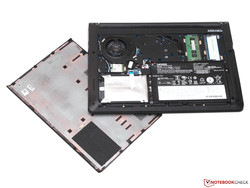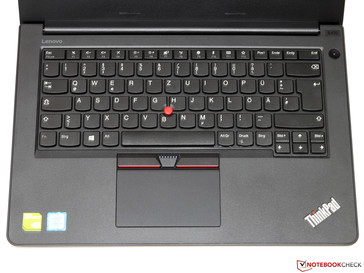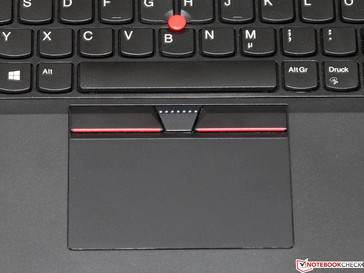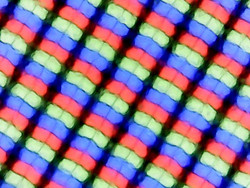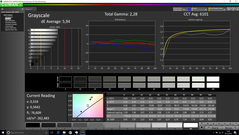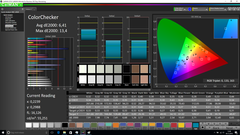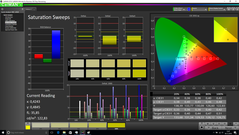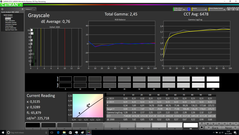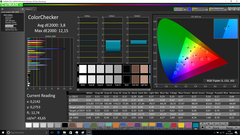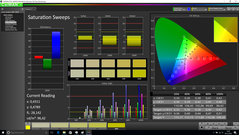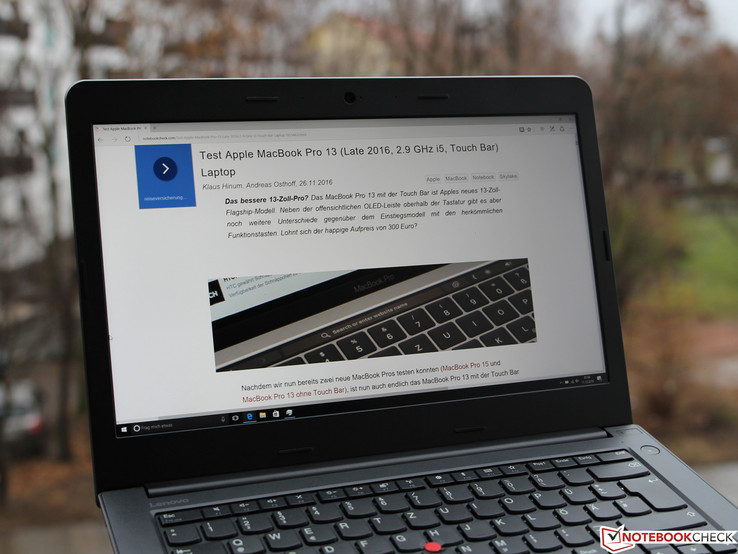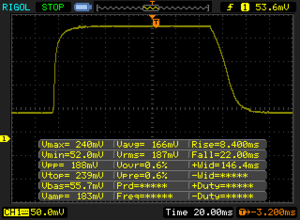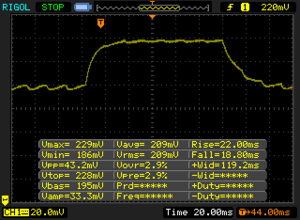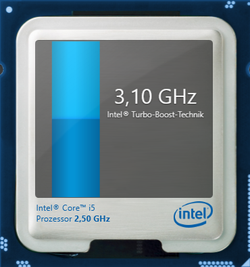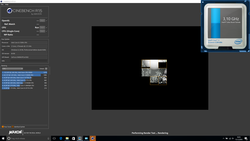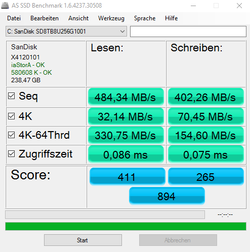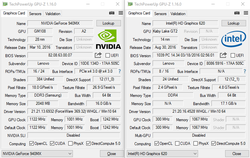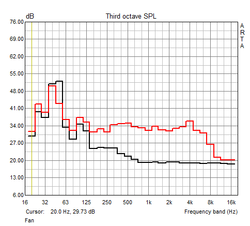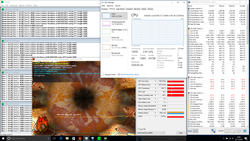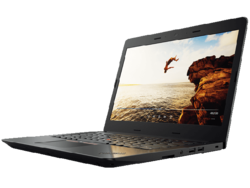Lenovo ThinkPad E470 (Core i5, GeForce 940MX) Notebook Review

For the original German review, see here.
The Intel Kaby Lake processors have been popular in the past few months and we have seen them in many laptops. Due to longer product cycles and higher development and testing costs in the business sector, the new Kaby Lake processors are just now entering the business laptop segment.
Lenovo has taken its time building the next instalment of the ThinkPad series, but now the Chinese manufacturer is ready to show the 14-inch ThinkPad E470 (less than 600 Euros/~$638 for students) to the world. The laptop does not include an operating system, but we were surprised to see the diverse features offered in the most basic configurations of this model: an i3 processor, 8 GB of RAM, a 256 GB SSD and an FHD IPS panel. Our test configuration is available for roughly 700 Euros (~$745) with a stronger Core i5 CPU and a dedicated GeForce 940MX GPU. This system should pack more power for gaming enthusiasts. There are more configurations available and the buyer should be able to find what they are looking for.
For comparison purposes, we will be including competitors of the ThinkPad E470 in this review. We have selected the HP ProBook 440 G4 and the Acer TravelMate P249-M, as they both belong to the business segment and use the new Kaby Lake platform.
| ThinkPad E470 (20H2S00500) | ThinkPad E470 (20H2S00400) | ThinkPad E470 (20H2S00700) |
|---|---|---|
| Core i3-7100U | Core i5-7200U | Core i7-7500U |
| 8 GB DDR4-RAM | 8 GB DDR4-RAM | 16 GB DDR4-RAM |
| 256 GB SSD | 256 GB SSD | 256 GB SSD |
| HD Graphics 620 | GeForce 940MX | GeForce 940MX |
| 1,920 x 1,080 pixels, IPS panel | 1,920 x 1,080 pixels, IPS panel | 1,920 x 1,080 pixels, IPS panel |
| no OS | no OS | no OS |
| 570 Euro | 680 Euro | 800 Euro |
Case
The case is covered with matte, black material, which will remind users of the traditional Lenovo look. The E470 has a simple yet functional design, which is slightly different from that of the predecessor, the E460: the form of the display hinges and the placement of the power button have changed. This is mainly fine tuning on the part of the manufacturer and will not significantly improve the user experience.
Considering modern mobility standards, the E470 has poor mobility as it weighs 1.9 kg (~4.2 lb) and is 24 mm (~0.94 in) thick. High-end models, such as the T460s (1.35 kg/~3 lb), 19 mm/~0.75 in), and direct competitors such as the HP model (ProBook 440 G4: 1.65 kg/~3.6 lb, 20 mm/~0.78 in), are alternatives which offer better mobility. Nevertheless, Lenovo has managed to create a very resistant case, without using light metal materials. The display cover should be a little thicker, but at the end of the day, the manufacturer has done a good job. The new central hinge is ideal, as it always keeps a firm grip on the display, which can be turned up to 180 degrees.
In terms of workmanship, Lenovo has provided us with an almost flawless test model: small and even material gaps with clean and rounded corners. This is definitely a big plus for this price segment.
Analysis of measurements and weight with comparison to competitors.
Connectivity
Sadly, the E series still refuses to take on the modern USB Type-C ports. The test model relies on 3x Type-A USB ports (2x USB 3.0, 1x USB 2.0). Furthermore, the laptop lacks a DisplayPort interface. These deficits are understandable if you consider the costs of these features and their suitability for the target audience. Potential buyers should know that the HDMI 1.4 interface can only output to a 4K display at 30 Hz. Officially, Lenovo only specifies support for 1920x1080 pixels (at 60 Hz).
Due to the displacement of the ventilation opening, all ports have been moved to new locations. The new layout is well-suited for right-hand users, as most cables (power adapter, Ethernet, HDMI) will be found in the rear left region of the laptop.
SD Card Reader
Depending on the file size, the maximum transfer rate of the SD card reader (tested with a Toshiba Exceria Pro SDXC 64 GB UHS-II) stays around 70 to 80 MB/s. This is a decent result, which places our test model between the low-end models with a USB 2.0 reader (max. roughly 30 MB/s) and premium notebooks with UHS II support (200 MB/s and more).
| SD Card Reader | |
| average JPG Copy Test (av. of 3 runs) | |
| HP ProBook 440 G4-Y8B51EA | |
| Lenovo ThinkPad E460-20EUS00000 | |
| Lenovo ThinkPad E470-20H2S00400 | |
| Acer TravelMate P249-M-5452 | |
| maximum AS SSD Seq Read Test (1GB) | |
| HP ProBook 440 G4-Y8B51EA | |
| Lenovo ThinkPad E460-20EUS00000 | |
| Lenovo ThinkPad E470-20H2S00400 | |
Communication
We were surprised to see that our ThinkPad did not use an Intel wireless adapter. Rather, the manufacturer has chosen a Qualcomm adapter. This module supports Bluetooth 4.1 and all typical WLAN standards in the 2.4 and 5 GHz frequency. Thanks to the Dual-Stream technology (2x2 TX/RX), it should be possible to reach transfer rates of up to 866 Mb/s in 802.11ac networks. In our tests, with optimal conditions (short distance to the router LinkSys EA8500), the test model reached around 600 MB/s while receiving data. This puts the E470 amongst the best laptops for wireless performance and only a few models can claim to do a better job: (Apple-) devices with Triple-Stream technology.
| Networking | |
| iperf Server (receive) TCP 1 m | |
| Lenovo ThinkPad E470-20H2S00400 | |
| HP ProBook 440 G4-Y8B51EA | |
| Acer TravelMate P249-M-5452 | |
| iperf Client (transmit) TCP 1 m | |
| HP ProBook 440 G4-Y8B51EA | |
| Lenovo ThinkPad E470-20H2S00400 | |
| Acer TravelMate P249-M-5452 | |
Security
As this is an entry-level model, the E470 lacks many security features, like NFC, smartcard reader or vPro support. In fact, a fingerprint reader is only available in certain configurations and is missing from our test model. Users must rely on rudimentary security measures, such as Kensington Lock and passwords (Power-On, hard disk, BIOS).
Accessories
Aside from the mandatory power adapter (65 W), Lenovo has little more to offer in the E470 delivery. The list of optional accessories is quite short and mostly includes peripherals, bags and docking stations (via USB 3.0). No dedicated docking stations are provided.
Maintenance
After removing three screws, the user can take off the bottom of the laptop. Sadly, there are not that many upgrade options for the test model: a free memory slot would offer support for another DDR4 module. Other slots are occupied (1x M.2/E-Key for WLAN, 1x 2.5" SSD). We expected at least 1 or 2 additional M.2 slots for further SSDs or an LTE module (like many competitors offer). We like the battery (screwed in but still removable) and the accessible fan (for cleaning).
Warranty
The warranty is limited to 12 months "Bring-In" service. This service can be extended for a little more money. An upgrade up to 3 years would cost 65 Euros (~$69) and with an "On-Site" service the price would be around 80 Euros (~$85).
Please see our Guarantees, Return Policies & Warranties FAQ for country-specific information.
Input Devices
Keyboard
The great quality of the keyboard has been one of the strongest selling points of ThinkPad models for years. The E-series is no exception. Once the user gets used to the slightly different Lenovo layout (Fn and CTRL keys swapped, can be changed in BIOS), typing becomes a joy, thanks to the strong yet crisp impact of the keys. The keyboard does not deform even when we start typing very fast. Every key press felt mechanical, but the clicking noise was relatively quiet.
Although the keyboard seems the same as the ones in other ThinkPad models, there are a few differences between the E, L or T series: in a direct comparison, the pressure point of the twice-as-expensive T460(s) is more satisfactory and the material of the keys is of a better quality. The high-end models also have a 2-level lighting system for the keys, which is lacking in the E470.
Touchpad
The third generation of the E400 series uses the UltraNav system: a touchpad and a TrackPoint with corresponding keys. The ClickPad was poor at first, but after several iterations, it has been refined to the point that the two integrated buttons are crisp. The user no longer displaces the mouse cursor when pressing the buttons. Finger movement on this surface (10 x 5.6 cm/~4 x 2.2 in) is comfortable and the pad supports all types of multi-touch gestures with up to 4 fingers.
Alternatively, the user can use the classic TrackPoint, which almost no other manufacturer except Lenovo employs. The soft-clicking buttons (including the scroll button) combined with the TrackPoint provide an entirely different experience to the touchpad. Users can choose between either of the two input devices for their work.
Display
According to the specifications, the E470 should have a TN panel with a WXGA resolution (1366x768 pixels). However, all the configurations available in our country use high-quality IPS panels with an FHD resolution (1920x1,080 pixels). The FHD panel offers a sharper display (157 instead of 112 PPI) and higher brightness (250 instead of 220 cd/m²). The viewing angles are also wider. In our opinion, nearly twice-as-large workspace of the FHD panel is worth the extra price.
Unfortunately, we could not confirm the brightness values Lenovo claimed the test model would offer: instead of 250 cd/m², our test model reaches only 231 cd/m². This might be a relatively decent value compared to other models and does work well for indoor use, but in the outdoors, the user will wish for higher brightness. At least the display is evenly lit (slight clouding on the right bottom corner) and the panel has no PWM flickering.
| |||||||||||||||||||||||||
Brightness Distribution: 89 %
Center on Battery: 242 cd/m²
Contrast: 659:1 (Black: 0.37 cd/m²)
ΔE ColorChecker Calman: 6.41 | ∀{0.5-29.43 Ø4.77}
ΔE Greyscale Calman: 5.94 | ∀{0.09-98 Ø5}
61.1% sRGB (Argyll 1.6.3 3D)
39.3% AdobeRGB 1998 (Argyll 1.6.3 3D)
42.67% AdobeRGB 1998 (Argyll 3D)
61.4% sRGB (Argyll 3D)
41.23% Display P3 (Argyll 3D)
Gamma: 2.28
CCT: 6101 K
| Lenovo ThinkPad E470-20H2S00400 N140HCA-EAB, , 1920x1080, 14" | Lenovo ThinkPad E460-20EUS00000 LG LP140WF6-SPB2, , 1920x1080, 14" | HP ProBook 440 G4-Y8B51EA AUO1E3D, , 1920x1080, 14" | Acer TravelMate P249-M-5452 Chi Mei N140HGE-EAA, , 1920x1080, 14" | Lenovo ThinkPad T460s-20FA003GGE VVX14T058J02, , 2560x1440, 14" | |
|---|---|---|---|---|---|
| Display | -5% | -9% | -7% | 64% | |
| Display P3 Coverage (%) | 41.23 | 39.1 -5% | 37.6 -9% | 38.15 -7% | 68.7 67% |
| sRGB Coverage (%) | 61.4 | 58.8 -4% | 56.6 -8% | 56.7 -8% | 98.1 60% |
| AdobeRGB 1998 Coverage (%) | 42.67 | 40.41 -5% | 38.85 -9% | 39.48 -7% | 70.4 65% |
| Response Times | 13% | 7% | 20% | 9% | |
| Response Time Grey 50% / Grey 80% * (ms) | 40.8 ? | 40 ? 2% | 43.2 ? -6% | 44 ? -8% | 35.6 ? 13% |
| Response Time Black / White * (ms) | 30.4 ? | 23.2 ? 24% | 24.4 ? 20% | 16 ? 47% | 29.2 ? 4% |
| PWM Frequency (Hz) | 50 ? | 220 ? | |||
| Screen | 9% | -21% | -15% | 27% | |
| Brightness middle (cd/m²) | 244 | 233 -5% | 216 -11% | 249 2% | 257 5% |
| Brightness (cd/m²) | 231 | 221 -4% | 203 -12% | 238 3% | 248 7% |
| Brightness Distribution (%) | 89 | 88 -1% | 83 -7% | 87 -2% | 94 6% |
| Black Level * (cd/m²) | 0.37 | 0.3 19% | 0.47 -27% | 0.41 -11% | 0.26 30% |
| Contrast (:1) | 659 | 777 18% | 460 -30% | 607 -8% | 988 50% |
| Colorchecker dE 2000 * | 6.41 | 4.43 31% | 8.98 -40% | 9.09 -42% | 4.59 28% |
| Colorchecker dE 2000 max. * | 13.4 | 14.07 -5% | 14.64 -9% | 9.72 27% | |
| Greyscale dE 2000 * | 5.94 | 3.78 36% | 9.61 -62% | 9.92 -67% | 6.38 -7% |
| Gamma | 2.28 96% | 2.31 95% | 2.63 84% | 2.42 91% | 2.51 88% |
| CCT | 6101 107% | 7171 91% | 11265 58% | 11177 58% | 6238 104% |
| Color Space (Percent of AdobeRGB 1998) (%) | 39.3 | 37.3 -5% | 35.9 -9% | 36.5 -7% | 65 65% |
| Color Space (Percent of sRGB) (%) | 61.1 | 58.7 -4% | 56.7 -7% | 56.7 -7% | 98 60% |
| Total Average (Program / Settings) | 6% /
7% | -8% /
-15% | -1% /
-9% | 33% /
32% |
* ... smaller is better
What the panel lacks in brightness, it makes up for with a high contrast. The satisfactory black value of 0.37 cd/m² results in a decent contrast of 659:1 (more than the one Lenovo specifies - 400:1). Although the market offers better IPS displays, with contrast values of 1000:1 and above, our test model does a good job for its price. Subjectively, the display provides satisfactory colors when playing movies or games (but the predecessor performs at a similar level).
In terms of color accuracy, the differences between our model and a higher-quality display become more tangible. The E470 is not designed for professional graphics editing, due to its limited color space coverage. At around 61% sRGB and 39% AdobeRGB coverage, the display is not able to provide a visual difference between the highest levels of blue and magenta. The Delta-E deviations can reach up to 10 or above on the CIE charts in these specific sections (ideally 3 or less). Calibration will not solve this problem. Thankfully, the display does not have any blue tinges.
Thanks to the matte display of the ThinkPad, the laptop does not need very high levels of brightness to be comfortably legible outdoors. Nevertheless, we think that users would have appreciated at least 300 cd/m² for outdoor use, especially on sunny days. On cloudy days, the test model will be legible, but in direct sunlight, it will be hard to recognize anything on this screen.
Display Response Times
| ↔ Response Time Black to White | ||
|---|---|---|
| 30.4 ms ... rise ↗ and fall ↘ combined | ↗ 8.4 ms rise | |
| ↘ 22 ms fall | ||
| The screen shows slow response rates in our tests and will be unsatisfactory for gamers. In comparison, all tested devices range from 0.1 (minimum) to 240 (maximum) ms. » 82 % of all devices are better. This means that the measured response time is worse than the average of all tested devices (20.2 ms). | ||
| ↔ Response Time 50% Grey to 80% Grey | ||
| 40.8 ms ... rise ↗ and fall ↘ combined | ↗ 22 ms rise | |
| ↘ 18.8 ms fall | ||
| The screen shows slow response rates in our tests and will be unsatisfactory for gamers. In comparison, all tested devices range from 0.165 (minimum) to 636 (maximum) ms. » 63 % of all devices are better. This means that the measured response time is worse than the average of all tested devices (31.6 ms). | ||
Screen Flickering / PWM (Pulse-Width Modulation)
| Screen flickering / PWM not detected | ||
In comparison: 53 % of all tested devices do not use PWM to dim the display. If PWM was detected, an average of 8084 (minimum: 5 - maximum: 343500) Hz was measured. | ||
The IPS panel ensures that users can view the contents from all angles. Horizontal and vertical viewing angles of up to 45 degrees do not cause any visual changes on the display. At larger angles or from directly above, the contrast starts dropping. At the end of the day, the display of the E470 is good for its price.
Performance
Currently, the Intel Kaby Lake product range encompasses 3 ULV processors: the Core i3-7100U, the i5-7200U and the i7-7500U. All three CPUs are offered by Lenovo for ThinkPad E470. Our test model runs on the i5 processor, which is placed between the other two in terms of price. It runs at 2.5 GHz basic clock speed and up to 3.1 GHz with Turbo. It is reminiscent of the older Skylake Core i7-6500U, which was made with a 14 nanometer finish. In short: for the same price, the Kaby Lake generation can offer more performance than its predecessor. The TDP value of this class has been kept the same: 15 W.
In addition to the integrated graphics chip, the HD Graphics 620, the laptop offers a dedicated graphics GPU, the Nvidia GeForce 940MX. This GPU runs on the older GM108, which is a 28 nm chip from the Maxwell generation. Although it has only 384 shaders and a small 64-bit memory interface with the integrated DDR3 RAM, the 940MX can offer up to 50% more performance when compared to the integrated graphics chip. The Optimus technology allows the laptop to automatically switch between the HD Graphics 620 and the Nvidia GeForce 940MX GPU when graphics performance is needed or when the laptop needs to save power.
The E470 wants to focus on fast flash memory for storage purposes. In this case, the laptop uses an SSD with a capacity of 256 GB. This should be sufficient for most users. The same is true for the 8 GB DDR4 memory. Although there is a free RAM slot available inside the laptop and it is possible to install a second 8 GB module, the relatively high DRAM prices will curb most upgrade possibilities.
Processor
On the CPU side, the Kaby Lake generation sets itself apart from the predecessor, Skylake, thanks to the slightly higher base and Turbo clock speeds. These increases are due to the further refinement of the architecture. It is worth mentioning that the Core i5-7200U and the faster i7-7500U can use their full Turbo Boost for all cores, even at full load. As usual, the typical limitations, such as power consumption and temperature levels, apply to these processors.
In the case of the Core i5-7200U in our test model, the performance was never lacking: whether single or Multithreading, the maximum clock speed of 3.1 GHz was offered in every situation. This is also true when the laptop is running on battery. Compared with the Core i5-6200U from last year, the performance has increased by 10 to 15%. The current top model, the Core i7-7500U, performs around 10% faster. Buyers should consider whether this performance increase is worth the price increase.
| Cinebench R15 | |
| CPU Single 64Bit | |
| HP ProBook 450 G4 Y8B60EA | |
| HP ProBook 440 G4-Y8B51EA | |
| Lenovo ThinkPad T460s-20FA003GGE | |
| Lenovo ThinkPad E560 20EV000XPB | |
| Lenovo ThinkPad E470-20H2S00400 | |
| Acer TravelMate P249-M-5452 | |
| Lenovo ThinkPad E460-20EUS00000 | |
| CPU Multi 64Bit | |
| HP ProBook 450 G4 Y8B60EA | |
| Lenovo ThinkPad T460s-20FA003GGE | |
| HP ProBook 440 G4-Y8B51EA | |
| Lenovo ThinkPad E470-20H2S00400 | |
| Lenovo ThinkPad E560 20EV000XPB | |
| Acer TravelMate P249-M-5452 | |
| Lenovo ThinkPad E460-20EUS00000 | |
Storage Device
Our test model uses a SanDisk SSD. The storage device of the current X400 series is made in the 2.5-inch format and offers a capacity of 256 GB. SanDisk advertises the series as high-performance, conservative and reliable. The latter is hard to prove. The performance is quite good, despite the TLC flash memory: at roughly 500 MB/s read and 400 MB/s write rate (both sequential), the drive is reaching the limits of the SATA interface. In comparison to the Samsung CM871 SSD of the predecessor, the E460, the write rate and speed of multiple, simultaneous transactions on the drive has increased significantly. An NVMe SSD connected with a PCIe interface, as in the T460s, would have been even faster, but the E470 does not include an appropriate slot.
| Lenovo ThinkPad E470-20H2S00400 SanDisk X400 SED 256GB, SATA (SD8TB8U-256G) | Lenovo ThinkPad E460-20EUS00000 Samsung CM871 MZ7LF192HCGS | HP ProBook 440 G4-Y8B51EA SanDisk SD8SNAT256G1002 | Acer TravelMate P249-M-5452 SK Hynix HFS256G39TND-N210A | Lenovo ThinkPad T460s-20FA003GGE Samsung SSD SM951a 512GB M.2 PCIe 3.0 x4 NVMe (MZVKV512) | |
|---|---|---|---|---|---|
| CrystalDiskMark 3.0 | -45% | -12% | 8% | 187% | |
| Read Seq (MB/s) | 476.5 | 497.6 4% | 491.2 3% | 510 7% | 1778 273% |
| Write Seq (MB/s) | 458.7 | 180 -61% | 322.2 -30% | 267.2 -42% | 1530 234% |
| Read 512 (MB/s) | 346.4 | 297.1 -14% | 310.1 -10% | 347.6 0% | 1339 287% |
| Write 512 (MB/s) | 291.1 | 169.1 -42% | 276 -5% | 267.5 -8% | 1506 417% |
| Read 4k (MB/s) | 35.15 | 18.91 -46% | 19.57 -44% | 33.12 -6% | 51.3 46% |
| Write 4k (MB/s) | 78.8 | 37.13 -53% | 77.8 -1% | 95.9 22% | 139.3 77% |
| Read 4k QD32 (MB/s) | 276 | 95.7 -65% | 146.3 -47% | 392.8 42% | 561 103% |
| Write 4k QD32 (MB/s) | 178.3 | 37.26 -79% | 241.4 35% | 266.4 49% | 277 55% |
System Performance
As expected, the combination of the fast Core i5 processor and a quick SSD produces a reliable and responsive system. To be honest, the increases in the CPU and storage device speeds (in comparison to the predecessor) do not make much of a difference in everyday use. As such, a switch, from the E460 to the test model, would not be worth the investment for most users. As mentioned previously, the Core i7-7500U is more expensive, but the performance difference is not significant. The money saved here could be used for a larger SSD.
| PCMark 8 Home Score Accelerated v2 | 3546 points | |
| PCMark 8 Creative Score Accelerated v2 | 4389 points | |
| PCMark 8 Work Score Accelerated v2 | 4642 points | |
Help | ||
Graphics Card
The E460 used a dedicated AMD GPU. Lenovo relies on an Nvidia GPU for the new model. In our synthetic 3D benchmarks, the GeForce 940MX performs 30 to 60% faster than the older Radeon R7 M360, but it seems that it also needs more power. The upcoming Nvidia Pascal chip GP108 should offer more performance with the same or lower power consumption.
The GeForce 940MX is around 1.5x faster than the HD Graphics 620 (with Dual-Channel memory). This is a worthwhile upgrade. If you regularly run 3D games or demanding programs, the additional performance will be a blessing. The integrated graphics processor is strong enough for simple multimedia tasks, like high-resolution 4K videos in the H.265 codec.
| 3DMark 11 - 1280x720 Performance GPU | |
| Lenovo ThinkPad E470-20H2S00400 | |
| HP ProBook 440 G4-Y8B51EA | |
| Lenovo ThinkPad E460-20EUS00000 | |
| Intel Kaby Lake i7-7500U / HD Graphics 620 | |
| Acer TravelMate P249-M-5452 | |
| 3DMark - 1920x1080 Fire Strike Graphics | |
| Lenovo ThinkPad E470-20H2S00400 | |
| HP ProBook 440 G4-Y8B51EA | |
| Intel Kaby Lake i7-7500U / HD Graphics 620 | |
| Lenovo ThinkPad E460-20EUS00000 | |
| Acer TravelMate P249-M-5452 | |
| 3DMark 11 Performance | 2642 points | |
| 3DMark Ice Storm Standard Score | 42449 points | |
| 3DMark Cloud Gate Standard Score | 6759 points | |
| 3DMark Fire Strike Score | 1528 points | |
Help | ||
Gaming Performance
Despite the dedicated graphics card, E470 buyers should be aware that they cannot run all games smoothly on this laptop. Demanding 3D games, such as “Deus Ex”, stutter even with a resolution of 1280x720 pixels. The ThinkPad is definitely not a gaming laptop. Older, less-demanding games, such as “Counter-Strike”, “Diablo 3”, “Overwatch” or “Sims 4”, run quite well and the resolution and the level of details can be increased. Detailed benchmarks and other games can be found in our database.
| low | med. | high | ultra | |
|---|---|---|---|---|
| BioShock Infinite (2013) | 92.4 | 53.1 | 43.1 | 15.1 |
| Battlefield 4 (2013) | 65.8 | 46.7 | 31.2 | 12.1 |
| Sims 4 (2014) | 150.6 | 68.9 | 41.4 | 29.9 |
| Deus Ex Mankind Divided (2016) | 24 | 16.5 | 8.5 |
Emissions
System Noise
Like most office notebooks, the E470 runs without active cooling while tackling everyday tasks. Furthermore, thanks to the SSD, the system runs silently. If you put your ear to the notebook, you can hear a slight electric humming, but this should not be audible at a distance.
With 3D load, the emissions reach 36 to 38 dB(A) and is around 3 dB(A) louder than the predecessor. This is another indication that the performance of the laptop has increased. This means that the ThinkPad is audible in quiet environments, but it is not distractingly loud.
Noise level
| Idle |
| 29 / 29 / 29 dB(A) |
| Load |
| 35.6 / 38.5 dB(A) |
 | ||
30 dB silent 40 dB(A) audible 50 dB(A) loud |
||
min: | ||
Temperature
The redesigned cooling system pushes the heat emissions out of the back, instead of the sides. This ensures that, even at full load, the hand-rest regions stay cool. Although the user will not encounter any hotspots near the front of the laptop, the back certainly gets hot: the case can hit up to 53 °C (~127 °F) near the rear. We recommend not operating the E470 on the lap while playing games or running demanding tasks.
In our synthetic stress test (Prime95 + FurMark), the hardware of the laptop hits high temperatures: up to 86 °C (~187 °F/GPU) and 92 °C (~198 °F/CPU). However, the hardware keeps running at full speed. The CPU runs slightly under its Turbo specification of 3.1 GHz due to the TDP limitation (15 W: 3.0 GHz). In everyday use, the ThinkPad should not be troubled by throttling issues.
(±) The maximum temperature on the upper side is 43.8 °C / 111 F, compared to the average of 34.3 °C / 94 F, ranging from 21.2 to 62.5 °C for the class Office.
(-) The bottom heats up to a maximum of 53 °C / 127 F, compared to the average of 36.8 °C / 98 F
(+) In idle usage, the average temperature for the upper side is 24.4 °C / 76 F, compared to the device average of 29.5 °C / 85 F.
(+) The palmrests and touchpad are cooler than skin temperature with a maximum of 25.5 °C / 77.9 F and are therefore cool to the touch.
(+) The average temperature of the palmrest area of similar devices was 27.6 °C / 81.7 F (+2.1 °C / 3.8 F).
Speakers
The stereo speakers are relatively loud (85 dB(A)), but the sound quality is modest. The speakers can fill a room well and offer high notes. However, the deep middle notes and the bass need work. The sound output is sufficient for Skype or YouTube videos, but music fans will opt for the audio out interfaces. The HDMI interface or 3.5 mm audio jack will allow output to speakers or headphones (no disturbance and suitable for high-impedance headphones).
Lenovo ThinkPad E470-20H2S00400 audio analysis
(+) | speakers can play relatively loud (84.8 dB)
Bass 100 - 315 Hz
(-) | nearly no bass - on average 15.7% lower than median
(±) | linearity of bass is average (11.2% delta to prev. frequency)
Mids 400 - 2000 Hz
(±) | higher mids - on average 9% higher than median
(±) | linearity of mids is average (11.1% delta to prev. frequency)
Highs 2 - 16 kHz
(±) | higher highs - on average 5.1% higher than median
(±) | linearity of highs is average (10.5% delta to prev. frequency)
Overall 100 - 16.000 Hz
(±) | linearity of overall sound is average (23.8% difference to median)
Compared to same class
» 67% of all tested devices in this class were better, 9% similar, 24% worse
» The best had a delta of 7%, average was 21%, worst was 53%
Compared to all devices tested
» 71% of all tested devices were better, 6% similar, 23% worse
» The best had a delta of 4%, average was 24%, worst was 134%
Apple MacBook 12 (Early 2016) 1.1 GHz audio analysis
(+) | speakers can play relatively loud (83.6 dB)
Bass 100 - 315 Hz
(±) | reduced bass - on average 11.3% lower than median
(±) | linearity of bass is average (14.2% delta to prev. frequency)
Mids 400 - 2000 Hz
(+) | balanced mids - only 2.4% away from median
(+) | mids are linear (5.5% delta to prev. frequency)
Highs 2 - 16 kHz
(+) | balanced highs - only 2% away from median
(+) | highs are linear (4.5% delta to prev. frequency)
Overall 100 - 16.000 Hz
(+) | overall sound is linear (10.2% difference to median)
Compared to same class
» 7% of all tested devices in this class were better, 2% similar, 91% worse
» The best had a delta of 5%, average was 18%, worst was 53%
Compared to all devices tested
» 4% of all tested devices were better, 1% similar, 94% worse
» The best had a delta of 4%, average was 24%, worst was 134%
Frequency diagram for comparison (checkboxes above can be selected!)
Energy Management
Power Consumption
The E460 was quite conservative while idle (4.1 to 8.9 W). Yet somehow Lenovo has managed to drop the consumption of the E470 even further: 2.7 to 6.5 W while idle. This makes our test model one of the most conservative laptops of its class.
At full load, the consumption is a little higher: while running 3D games, the ThinkPad needs 45 W (10% more than the predecessor). However, when we consider the increased CPU and GPU performance, this increase seems reasonable. This positive impression is further strengthened when one considers how well Lenovo has managed the heat and noise emissions of the hardware. The included 65-W power adapter covers the needs of the laptop well.
| Off / Standby | |
| Idle | |
| Load |
|
Key:
min: | |
| Lenovo ThinkPad E470-20H2S00400 i5-7200U, GeForce 940MX, SanDisk X400 SED 256GB, SATA (SD8TB8U-256G), IPS, 1920x1080, 14" | Lenovo ThinkPad E460-20EUS00000 6200U, Radeon R7 M360, Samsung CM871 MZ7LF192HCGS, IPS-Panel, 1920x1080, 14" | HP ProBook 440 G4-Y8B51EA i7-7500U, GeForce 930MX, SanDisk SD8SNAT256G1002, TN, 1920x1080, 14" | Acer TravelMate P249-M-5452 6200U, HD Graphics 520, SK Hynix HFS256G39TND-N210A, TN LED, 1920x1080, 14" | Dell Latitude 3470 N2P7L347014EMEA 6200U, HD Graphics 520, Samsung SSD 850 EVO 250GB, , 1366x768, 14" | |
|---|---|---|---|---|---|
| Power Consumption | -21% | 3% | -4% | -13% | |
| Idle Minimum * (Watt) | 2.7 | 4.1 -52% | 3 -11% | 3.8 -41% | 4.3 -59% |
| Idle Average * (Watt) | 5.5 | 8 -45% | 5.4 2% | 7.6 -38% | 8 -45% |
| Idle Maximum * (Watt) | 6.5 | 8.9 -37% | 6.3 3% | 8 -23% | 10.3 -58% |
| Load Average * (Watt) | 44.2 | 39.3 11% | 37.5 15% | 30.5 31% | 26.4 40% |
| Load Maximum * (Watt) | 65.2 | 52.2 20% | 61.1 6% | 32.5 50% | 28.3 57% |
* ... smaller is better
Battery Life
Although the previous model used a 47 Wh battery, the test model uses a 45 Wh battery. Thanks to the increased energy efficiency, the laptop is able to last longer, despite having a smaller battery. If the brightness is set to around 150 cd/m², the laptop lasts around 5:30 hours while surfing on the WLAN. While watching videos, the battery has reserves for up to 8:30 hours. The HP ProBook 440 G4 offers longer battery life due to the less power-hungry, but poorer TN display. If you lower the brightness of the IPS panel further and turn on power-saver options, you can get around 8 hours for a complete workday.
| Lenovo ThinkPad E470-20H2S00400 i5-7200U, GeForce 940MX, 45 Wh | Lenovo ThinkPad E460-20EUS00000 6200U, Radeon R7 M360, 47 Wh | HP ProBook 440 G4-Y8B51EA i7-7500U, GeForce 930MX, 48 Wh | Acer TravelMate P249-M-5452 6200U, HD Graphics 520, 41 Wh | Lenovo ThinkPad T460s-20FA003GGE 6600U, HD Graphics 520, 49 Wh | |
|---|---|---|---|---|---|
| Battery runtime | -16% | 16% | -15% | -22% | |
| Reader / Idle (h) | 17.4 | 12.3 -29% | 18.1 4% | 13.2 -24% | 13.9 -20% |
| H.264 (h) | 8.4 | 7.1 -15% | 9.5 13% | 6 -29% | 6.6 -21% |
| WiFi v1.3 (h) | 5.4 | 4.9 -9% | 6.9 28% | 6.7 24% | 5.7 6% |
| Load (h) | 2.1 | 1.9 -10% | 2.5 19% | 1.5 -29% | 1 -52% |
Pros
Cons
Verdict
This year, Lenovo has stuck with the previous design of the E400 series and upgraded some aspects. The laptop has great workmanship, input devices and well-managed noise and heat emissions. Furthermore, our test configuration included a Core i5 processor, an SSD, an IPS display and a dedicated GeForce GPU - all for a price of 700 Euros (~$745). Sadly, the laptop is only available to students at this price and configuration.
High-quality, good hardware and well-made: the Lenovo ThinkPad E470 is a price/ performance hit with all-round qualities.
We must also consider the downsides of this model: the heavy case with few upgrade options and limited modern ports. We would have appreciated having at least one M.2 slot or a USB Type-C port. Competitors, such as the HP ProBook 440 G4, have managed to include such features. Strategically, this decision makes sense: these features would detract from the attractiveness of the more expensive ThinkPad laptops. Buyers are spoilt for choice: the ThinkPad E470 is a nice work laptop with multiple configurations, which is good for office and multimedia work.
Lenovo ThinkPad E470-20H2S00400
- 12/27/2016 v6 (old)
Till Schönborn
























